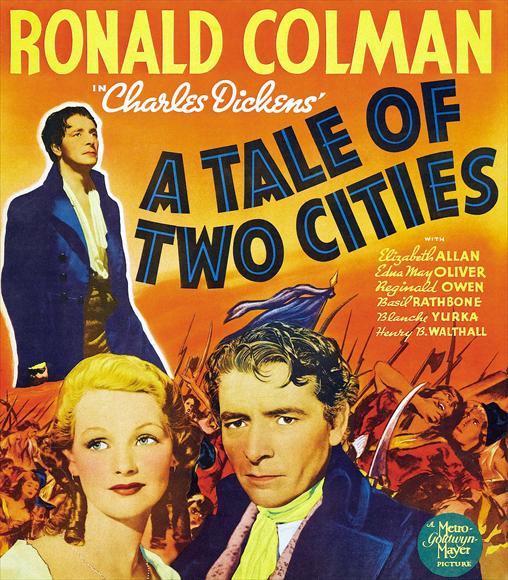What Are Literary Devices? List & Definition Cheat-Sheet

What are literary devices? Many writers struggle to answer this question. In today’s guide, I’ll set the records straight and tell you what they are, how to use them, and why. By the end, you’ll have everything you need to wield language with precision and elevate your writing.
Understanding literary devices empowers us to convey what we want our audience to know or feel, which is the ultimate goal of storytelling. So, I’ll give you a list of literary devices and definitions in a simple-to-follow way that you can easily apply to your writing. Without further ado, let’s start learning.
What Are Literary Devices?
Literary devices are tools and techniques writers use to create depth and meaning in our work. From novels to poetry, essays to screenplays, these devices give writing texture, nuance, and resonance. They encompass many things, from language choices to structural patterns, and each serves a unique purpose in shaping the reader’s experience.
Here is a quick list of the literary devices I’ll be covering today:
- Allusion
- Diction
- Alliteration
- Allegory
- Colloquialism
- Euphemism
- Flashbacks
- Foreshadowing
- Imagery
- Personification
- Juxtaposition
- Metaphor or simile
- Tone
- Onomatopoeia
At their core, these literary devices enhance communication by engaging readers on multiple levels. They evoke emotions, spark imagination, and invite interpretation. Whether it’s the vivid imagery of a metaphor, the rhythmic repetition of alliteration, or the subtle foreshadowing of events to come, these devices enrich storytelling and leave a lasting impression on audiences.
With the “what” out of the way, let’s jump into a more detailed list of literary devices and definitions.
Literary Devices List & Definitions
Allusion
Allusion is when a writer references another work of art, culture, or history within their writing. For example, you could describe your character as having “Herculean strength, ” referring to the Greek hero Hercules.
This instantly paints a vivid picture of the character’s physical prowess, allowing you to describe the character extensively (using relatively few words) through the power of association. Allusions can also establish tone, provide insight into characters, and enhance your thematic elements.
Diction
Diction refers to the choice and use of words and phrases in writing. It encompasses vocabulary, syntax, and style and influences the tone and atmosphere of a piece. For instance, a horror novel would likely use foreboding, ominous language to create a sense of tension and suspense.
You May Also Like: How To Write Like Stephen King (And Still Be Unique)
Diction conveys the intended mood, setting, and characterization. By carefully selecting words, writers can evoke specific emotions, enhance imagery, and effectively communicate their message to the audience.
Alliteration
Alliteration involves repeating initial consonant sounds in close proximity within a sentence or phrase. It adds rhythm and musicality to writing, making it more memorable and engaging. For example, “Peter Piper picked a peck of pickled peppers” is a classic alliterative phrase.
While alliteration is most used in poetry, it certainly has a place in novels when used well. Alliteration adds a lyrical quality to the writing, which can help break up long descriptive passages and capture the reader’s attention. An example could be:
“The moonlight danced delicately down the dim, deserted street, casting captivating shadows on the cobblestone pathway. A gentle breeze whispered through the withering willows, weaving wistful melodies that echoed eerily in the empty air. The scent of sweet jasmine mingled with the subtle scent of sandalwood, suffusing the silent night with a sense of serenity and solitude.”
Allegory
An allegory is a literary device in which characters, events, or settings represent abstract ideas or moral principles. It allows writers to convey complex concepts in a more accessible and relatable manner. For instance, George Orwell’s “Animal Farm” allegory uses farm animals to satirize political systems and human nature.

Allegory is important because it lets you explore deeper themes and commentary while maintaining a coherent and accessible narrative. It also encourages critical thinking and interpretation, engaging readers on multiple levels and often leaving a lasting impact.
Colloquialism
Colloquialism refers to informal, everyday language specific to a particular region or social group. It reflects natural speech patterns and cultural norms, adding authenticity and realism to dialogue. For example, using “gonna” instead of “going to” or “y’all” instead of “you all” in a novel set in the Southern United States.
Using colloquialisms lends authenticity to characters and settings, making them more relatable and believable to the audience. It enhances characterization and enriches dialogue, helping to establish tone and legitimize the setting.
Euphemism
Euphemism involves substituting harsh or unpleasant terms for milder or indirect language. It allows writers to address sensitive topics gracefully and characters within the work to do the same. An example of euphemism is using “passed away” instead of “died” in a story about grief and loss.
Importance: Euphemism conveys things with subtle nuances of meaning and can evoke specific emotions without being overly blunt. It’s also important to remember that people in delicate real-life situations tend to use less upsetting, possibly offensive language when possible. As a result, it can often be a realistic way for characters to speak as well.
Flashbacks
Flashbacks are scenes or sequences that depict events from the past within the timeline of a narrative. They provide context, backstory, and insight into the characters’ motivations and experiences. For example, in a screenplay, a character’s traumatic childhood might be revealed through flashback sequences.
Having readers experience these key moments enriches storytelling, deepens characterization, and explores the consequences of past actions. When done well, they create suspense, intrigue, and emotional resonance, improving the overall impact of the narrative.
Foreshadowing
Foreshadowing involves hinting at future events or outcomes within a story. It builds anticipation and suspense, preparing the audience for what is to come. For example, in a mystery, subtle clues or ominous warnings early on may foreshadow a later plot twist or revelation.
You May Also Like: Write Better Characters And Plots – 5 Tips
Foreshadowing is very important for your narrative. With no foreshadowing, your big reveals will feel like they came out of left field. However, when you use them well, they create a sense of tension, leading to a more satisfying payoff later in the story.
Imagery
Imagery refers to using vivid and descriptive language that appeals to the senses and creates a mental picture for the reader. By painting a detailed picture of the setting, characters, and events, you accomplish the classic advice of “show, don’t tell.”
Proper imagery transports readers into the story, immersing them in its sights, sounds, smells, tastes, and textures. It enhances mood and atmosphere and adds richness to the narrative.
Personification
Personification involves attributing human qualities or characteristics to non-human things, like objects, animals, or abstract concepts. It gives these entities human-like traits, behaviors, or emotions, making them more relatable and accessible to the reader’s imagination.
One of my favorite examples of personification comes from William Wordsworth’s poem “I Wandered Lonely as a Cloud”:
“I wandered lonely as a cloud
That floats on high o’er vales and hills,
When all at once I saw a crowd,
A host, of golden daffodils;
Beside the lake, beneath the trees,
Fluttering and dancing in the breeze.”
Clouds don’t get lonely; they can’t see, and daffodils can’t dance. This is personification. However, when Wordsworth says the daffodils are “fluttering and dancing in the breeze.” he gives them human-like qualities of movement and emotion that bring them (and the scene of nature) to life in our imagination.
Juxtaposition
Juxtaposition involves placing two or more contrasting elements side by side to highlight their differences or create a sense of tension or irony. It draws attention to disparities, contradictions, or unexpected connections between ideas, characters, or situations.
In Charles Dickens’s “A Tale of Two Cities,” the opening line, “It was the best of times, it was the worst of times,” juxtaposes opposing extremes to underscore the tumultuous nature of the times. Other examples are love and hate, war and peace, life and death, etc.

When done well, juxtaposition encourages readers to consider the complexities and contradictions inherent in the human experience. It adds depth and nuance to the narrative by challenging assumptions, inviting readers to explore alternative perspectives, and making things less black & white.
Metaphor or simile
Metaphors and similes are figurative language devices that compare two seemingly unrelated things to create a vivid and imaginative image. The two are slightly different but achieve the same thing. A metaphor implies a direct comparison without using “like” or “as,” whereas similes use these words to establish the connection more explicitly.
A great yet simple example of a metaphor is “Her heart is a fragile glass.” In this metaphor, the heart is compared to glass. This implies that it is delicate and easily broken, suggesting that the person’s emotions or feelings are vulnerable and can be shattered, much like glass.

Here is a simile: “Her heart is like a fragile glass.” This simile also compares the heart to glass. However, unlike a metaphor, a simile uses “like” to make the comparison explicit. By saying “like,” the simile indicates a direct resemblance between the heart and glass, emphasizing the fragility of the heart more directly.
Both metaphors and similes enable us to convey abstract concepts, emotions, or experiences in concrete and relatable terms. They stimulate the imagination, evoke sensory impressions, and create memorable associations that deepen the reader’s understanding and engagement with the text.
Tone
Tone refers to the writer’s attitude or perspective toward the subject matter, characters, or audience and is conveyed through the writing’s language, style, and mood. Your tone can be formal, informal, serious, humorous, optimistic, pessimistic or satirical, depending on the intended effect.
For example, “To Kill a Mockingbird” starts with a nostalgic and innocent tone as Scout Finch recalls her childhood, but as the story delves into themes of racism and injustice, the tone becomes more somber and reflective.

Tone sets a literary work’s overall mood and atmosphere and is your tool for making sure the reader feels the way you want them to feel when they read your work. To be more hands-on with the tone of your writing, immerse yourself in the emotions and atmosphere you want to convey.
Experiment with word choice, sentence structure, and pacing to evoke the desired feeling. Consider the reactions you want from readers and adjust your tone accordingly, whether it’s playful, sad, suspenseful, or nostalgic. And remember to stay consistent throughout your narrative to maintain the tone’s impact.
Onomatopoeia
Onomatopoeia is words that imitate or mimic the sound they describe. So, “The bee buzzed around the flowers. The fireworks boomed in the night sky. The bacon sizzled in the frying pan.” These words imitate the sounds they describe, adding an auditory element to the writing and engaging more senses.
Additionally, onomatopoeic words can convey emotional nuances within writing. “The rain tapped lightly against the window, creating a soothing rhythm that lulled her to sleep.”
In this sentence, the onomatopoeic word “tapped” not only describes the sound of the rain but also conveys a sense of gentleness or tranquility, which enhances the overall mood of the scene. Also, just for your information, when writing, onomatopoeia are generally italicized to make them clear to the reader.
Conclusion
There you have it, folks: a quick list of the most common literary devices, their definitions, and how they can be applied to your writing. Even if you weren’t aware of the names, you’ve undoubtedly been using many of them already. Hopefully, today’s article will allow you to be more intentional about weaving them into your work and improve it. Until then, get out there and get to writing.